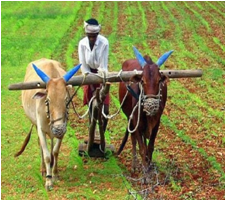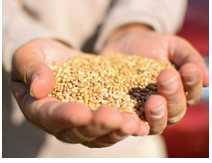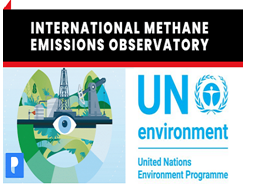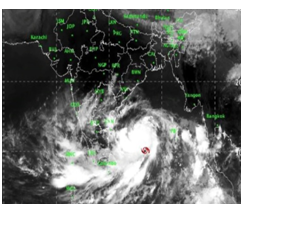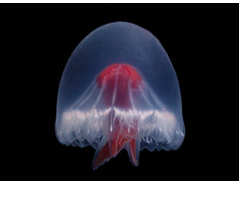

Garba of Gujarat in UNESCO Intangible Cultural Heritage list
Gujarat’s traditional dance form ‘Garba’ was on December 6 included in the list of Intangible Cultural Heritage by the United Nations Educational, Scientific and Cultural Organization (UNESCO)
About –
- The popular dance form is the 15thcultural item from India to make it to the UNESCO list.
- The inclusion made under the provisions of the 2003 Convention for the Safeguarding of Intangible Cultural Heritage.
- Garba is celebrated for nine days during the festival of Navaratri.
- Described the ‘Garba’ as a ritualistic and devotional dance performed throughout the State of Gujarat and across India.
- The list for the Safeguarding of the Intangible Cultural Heritage currently has some 704 elements corresponding to 5 regions and 143 countries.
- It includes forms of expression that testify to the diversity of intangible heritage and raises awareness of its importance.
- Apart from ‘Garba of Gujarat,’ some of the new inscriptions include Rickshaws and Rickshaw painting in Dhaka from Bangladesh, Songkran in Thailand, traditional Thai New Year festival from Thailand; Hiragasy, a performing art of the Central Highlands of Madagascar; Junkanoo from the Bahamas, and the Procession and celebrations of Prophet Mohammed’s birthday in Sudan.
History (GS-I)
MahaparinirvanDiwas
December 6 is observed as the MahaparinirvanDiwas, or the death anniversary, of Dr B R Ambedkar, the Father of the Indian Constitution.
About:
- Baba Saheb, Dr. BhimRaoAmbedkar was born on April 14, 1891, he was the 14th and last child of his parents.
- BabasahebAmbedkar was the son of SubedarRamjiMalojiSakpal. He was Subedar in British Army.
- Babasaheb’s father was a follower of SantKabir and was also a well-read person.
- DrBabasahebAmbedkar was conferred with the title of “Bodhisattva” by the Buddhist monks at “Jagatik Buddhism Council” in 1954 in Kathmandu, Nepal.
- The special thing is that DrAmbedkar was conferred with the title of Bodhisattva while he was alive.
- He also contributed to India’s Independence struggle and in its reforms post-independence.
- Apart from this, Babasaheb played a significant role in the formation of the Reserve Bank of India.
- Dr. B.R. Ambedkar’s death anniversary is observed as MahaparinirvanDiwas across the country.
Polity and Governance (GS-II)
Kisan e-Mitra
Union Minister of State for Agriculture and Farmers Welfare KailashChoudhary launches PM KISAN AI-Chatbot (Kisan e-Mitra) in New Delhi.
About:
- The introduction of the AI chatbot in the PM-KISAN grievance management system is aimed at empowering farmers with a user-friendly and accessible platform.
- Currently, the Chatbot is available in English, Hindi, Bengali, Odia, and Tamil.
- In a short period, it will be available in all 22 languages of the country.
- The AI Chatbot acts as a comprehensive guide for the beneficiaries, providing them with timely and accurate responses to their queries related to the scheme.
- This is the first AI Chatbot integrated with a major flagship scheme of the Union government.
- It has been developed and improved with the support of the EKstep Foundation and Bhashini.
Economy (GS-III)
Seed Cooperative Society
Ministry of Cooperation has set up BhartiyaBeejSahkariSamiti Limited under the Multi- State Cooperative Societies (MSCS) Act, 2002.
- The BBSSL will undertake production, procurement & distribution of quality seeds under single brand through cooperative network to improve crop yield and develop a system for preservation and promotion of indigenous natural seeds.
- The following shall be eligible to become ordinary member of the BBSSL:-
- Any multi-State co-operative society or any co-operative society;
- The National Co-operative Development Corporation (NCDC) established under the National Co-operative Development Corporation Act, 1962 (26 of 1962);
- Any other corporation owned or controlled by the Government;
- Such class or classes of persons or associations of persons as may be permitted by the Central Registrar having regard to the nature and activities of the Society.
Environment (GS-III)
International Methane Emissions Observatory 2023 Report
Recently, a report named “An Eye on Methane”, on Methane emission has been released by the International Methane Emissions Observatory.
About the Report:
- The International Methane Emissions Observatory’s third annual report provides decision makers a framework of action to track and monitor methane emissions to plan targeted and ambitious action for their mitigation.
- Key Highlights:
- 20 IMEO-funded and coordinated peer-reviewed studies have been published and 7 studies submitted or under review.
- 114 oil and gas companies – covering 37% of production – joined UNEP’s measurement, reporting and verification programme OGMP 2.0 September 2023 cut-off.
- Methane Alert and Response System (MARS), launched at COP27, has issued alerts on 127 plumes to the responsible authorities.
- Methane data platform is under design.
- Funding is secured for baseline studies that will provide an empirical and actionable assessment of emissions across methane-emitting sectors for selected countries.
Disaster Management (GS-III)
National Crisis Management Committee (NCMC)
National Crisis Management Committee (NCMC) has met to review preparedness of State governments and Central Ministries/ Departments for impending Cyclone ‘Michaung’ in Bay of Bengal.
- The National Disaster Response Force (NDRF) has made five teams available for Tamil Nadu and three teams for Puducherry.
- The NCMC reviewed the preparedness of central ministries, agencies, and state and Union Territory governments for the possible cyclonic storm over the Bay of Bengal.
- Teams are also being kept on standby for Andhra Pradesh and they will be activated as and when the state government asks for them.
About NCMC:
- The NCMC has been constituted under the chairmanship of the Cabinet Secretary.
- The other members of this Committee include the secretary to the Prime Minister, secretaries of the ministries of home affairs, defence, agriculture and cooperation, RAW and director of Intelligence Bureau.
- The NCMC gives direction to the Crisis Management Group (CMG) as deemed necessary.
|
Crisis Management Group (CMG):
|
Science and Technology (GS-III)
‘Bhashini’ ,an AI-led language translation system
For a few weeks this year, villagers in the Southwestern Indian state of Karnataka read out dozens of sentences in their native Kannada language into an app as part of a project to build the country's first AI-based chatbot for Tuberculosis.
About:
- The Indian government, which aims to deliver more services digitally, is also building language datasets through Bhashini, an AI-led language translation system that is creating open source datasets in local languages for creating AI tools.
- The platform includes a crowdsourcing initiative for people to contribute sentences in various languages, validate audio or text transcribed by others, translate texts and label images.
Similar efforts:
- Google-funded Project Vaani, or voice, is collecting speech data of about 1 million Indians and open-sourcing it for use in automatic speech recognition and speech-to-speech translation.
- Bengaluru-based EkStep Foundation's AI-based translation tools are used at the Supreme Court in India and Bangladesh.
- While the government-backed AI4Bharat centre has launched Jugalbandi, an AI-based chatbot that can answer questions on welfare schemes in several Indian languages.
Science and Technology (GS-III)
“Contact binary" satellite – ‘Selam’
The first asteroid target of NASA's Lucy mission hosts an unexpected "contact binary" satellite. Scientists have named it "Selam."
About:
- This first asteroid encounter for the Lucy mission really surprised everyone.
- Not only was there the surprise of the previously hidden contact binary, but the surprisingly high-resolution images revealed boulder-strewn surface on both small worlds.
- Up close, 790 meter-wide Dinkinesh looks a lot like 101955 Bennu, visited by OSIRIS-REx.
- NASA says that we can expect to see more images of the flyby with additional processing soon, saying that the team has completed downlinking the data from Lucy’s first asteroid encounter and is continuing to process it.
|
The fossil Selam was discovered in 2000 in Dikika, Ethiopia, and belonged to a 3-year-old girl of the same species as Lucy. |
Science and Technology (GS-III)
‘Sovereign AI’ in India
Since the country believes that AI can bring about big changes in its digital economy, India is also going towards making laws governing the technology that are introduced going forward.
Background:
- The idea of harnessing economic benefits from aggregated non-personal datasets was first proposed by a MeitY-appointed committee chaired by Infosys co-founder Kris Gopalakrishnan.
- In a draft report of January 2021, the committee recommended the identification of certain “high value datasets” which could be shared for the purpose of encouraging innovation and ensuring national security.
About the Plan:
- India datasets program aims to establish a unified platform for data sharing and exchange among various stakeholders.
- Inclusive of governments, private sector entities, MSMEs, startups, academia, civil society, and media organizations.
- The program suggests the possibility of monetizing non-personal data, contributing to economic benefits.
- Envisaged to play a crucial role in enhancing the artificial intelligence ecosystem in India by fostering data-driven innovation.
Environment (GS-III)
Air pollution causes over 2 million deaths annually in India: BMJ study
According to a modelling study published in The BMJ, outdoor air pollution from all sources accounts for 2.18 million deaths per year in India, second only to China.
About the report:
- Fossil Fuel-Related Air Pollution:
- Fossil fuel use in industry, power generation, and transportation causes 1 million extra deaths annually.
- This accounts for 61% of the estimated 8.3 million deaths from outdoor air pollution in 2019.
- Potential Health Benefits of Phasing Out Fossil Fuels:
- Replacing fossil fuels with clean, renewable energy could prevent a substantial number of deaths worldwide.
- Estimates indicate larger impacts on mortality than previously thought, emphasizing the health benefits of clean energy adoption.
- Assessment Scenarios and Regional Variances:
- Researchers employed scenarios ranging from complete fossil fuel phase-out to partial exposure reductions.
- South and East Asia, particularly China and India, face the highest attributable deaths, with common health conditions linked to air pollution.
- Public Health and Climate Co-Benefits:
- The study emphasizes the urgent need for transitioning to renewable energy for public health and climate benefits.
- COP28 climate change negotiations provide an opportunity to prioritize fossil fuel phase-out for substantial health gains.
Science and Technology (GS-III)
Launch of Three anti-submarine warfare ships
The first of the three ships in a series of eight Anti-Submarine Warfare (ASW) shallow water crafts for the Indian Navy were launched.
More on the news
- The ships are named INS Mahe, INS Malvan and INS Mangrol.
- These Maheclass of ships will replace the Navy’s in-service Abhay class ASW corvettes.
- These ships are designed for anti-submarine operations in the coastal waters, low-intensity maritime, mine laying and sub-surface surveillance operations.
- Also capable of coordinated ASW operations with aircraft, and search and rescue.
- Equipped with light-weight torpedoes, ASW rockets and mines, close-in weapon system (30 mm gun) and 12.7 mm stabilised remote control guns.
- Each of these vessels is 78 m long, 11.36 m wide, has a draught of 2.7 m, displacement of 896 tonnes and can attain speeds of up to 25 knots (approximately 45 kmph).
Endurance- 1,800 nautical miles and have been designed to fit indigenously-developed sonars for underwater surveillance. Each vessel would carry 57 personnel, including seven naval officers.
- Built as per integrated hull outfit and painting construction method followed at the yard and as per naval requirements.
|
Anti-submarine warfare
|
Science and Technology (GS-III)
Exercise Milan
On the occasion of Navy Day on December 4, Indian navy is also gearing up to host Exercise MILAN, early next year.
More on the news
- The next edition of Exercise MILAN is scheduled to be held in February 2024, and is expected to see the participation of over 50 countries.
- This reflects the significant expansion of the Navy’s engagements as well as capacity to assist countries in the Indian Ocean Region (IOR) as the first responder and Preferred Security Partner.
Exercise MILAN
- A biennial multilateral naval exercise which began in 1995, and has since significantly expanded in scope and scale to become the largest exercise held by India.
- Starting with the participation of only four countries, viz Indonesia, Singapore, Sri Lanka and Thailand, in the 1995 edition, the exercise has since transitioned leaps and bounds.
- Participation increased from six regional countries to 18 countriesin 2014 which included IOR littorals.
- Originally conceived in consonance with India’s ‘Look East Policy’, MILAN expanded in ensuing years with the GOI’s ‘Act East policy’ and Security And Growth for All in the Region (SAGAR) initiative, to include participation from island nations in the Western IOR as also IOR littorals.
- The last edition of Milan, was held off Visakhapatnam sa participation from 40 nations.
Science and Technology (GS-III)
Tejas jets and Prachand helicopters
Defence Acquisition Council (DAC), chaired by Defence Minister gave approval to defence acquisition projects that included procurement of 97 Tejas light combat aircraft and 156 Prachand combat helicopters.
Importance of this approval
- This comes at a time India is locked in a bitter military standoff with China at a number of friction points in Eastern Ladakh for over three years.
- It will significantly enhance the combat capabilities of the armed forces.
Emphasis on domestic procurement
- 98 per centof the total procurement worth 2.23 lakh crore will be sourced from domestic industries and that the move will give a substantial boost to the Indian defence industry in achieving the goal of 'Aatmanirbharta' (self-reliance) in defence industry.
Tejas:
- The indigenous Light Combat Aircraft (LCA), is designed to carry a range of air-to-air, air-to-surface, precision-guided weapons.
- Air-to-air refuelling capability, carefree handling, enhanced manoeuvrability, multi-mode airborne radar, and self-protection suite.
- Maximum speed of Mach 1.8. and the range of the aircraft is 3,000 km.
- The LCA programme
- Started by the Government of India in 1984 to replace ageing Mig 21 fighter The government established the Aeronautical Development Agency (ADA) (under the Department of Defence Research and Development) to manage the LCA programme.
Prachand helicopters:
- It is an Indian multi-role light attack helicopter designed and manufactured by the Hindustan Aeronautics Limited (HAL) under Project LCH.
- It has been ordered by the Indian Air Force and the Indian Army. Its flight ceiling is the highest among all attack helicopters in the world.
Santjordiapagesi, a new jelly fish discovered
In 2002, scientists aboard a research vessel discovered a peculiar jellyfish near a volcanic crater off Japan. Spotting the same creature again in 2020, scientists have now confirmed that it is a new species named Santjordiapagesi.
About the Species:
- The species noted at 4 inches wide and 3 inches tall, boasts a circular body with around 240 tentacles.
- Its most distinctive feature is a bright red, cross-shaped stomach. Photos show its transparent body, resembling a cushion, with a thick white ring and vein-like structures.
- The jellyfish, found at depths of 2,700 to 2,800 feet in the Sumisu Caldera near the Ogasawara Islands, has been observed pulsing its body, propelling it forward by opening and contracting the outer white ring.
- DNA analysis revealed enough genetic distinction to classify it into a new subfamily, bring to the fore its rarity and significance in marine biology.


